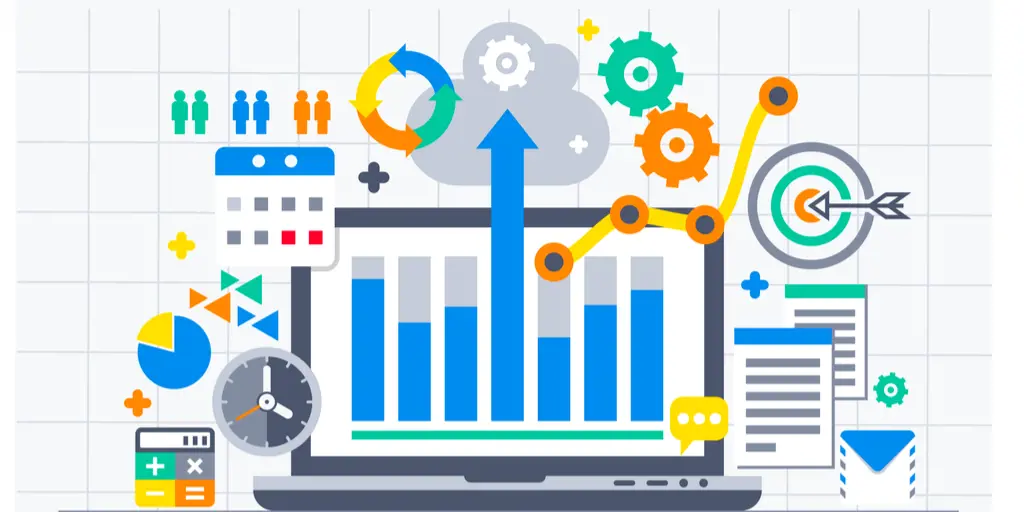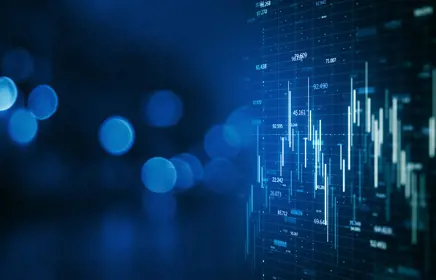
The analytics trends to watch in 2019
Added Friday 28 December 2018 by MHR Analytics
When it comes to analytics in 2019, there are a number of trends and technologies that will see the space markedly changed from 2018.
The “Digital Mesh” that will merge the boundaries between machine and man and digital and reality is set to become more and more evident as time passes… The fourth revolution is in full-force.
We caught up with the experts at MHR Analytics to get their thoughts on the technologies we can expect to see at the forefront of innovation in the industry in 2019.
Augmented Analytics
Augmented Analytics is listed by Gartner as one of the biggest analytics trends to look out for in 2019.
This technology involves the fusing of Business Intelligence with Artificial Intelligence to automate the process of finding data, preparing it for analysis and generating insights.
The real star of the show here will be natural language generation… think of it as having your very own Alexa on hand to answer your data queries.
Natural-language generation works in Augmented Analytics to humanise data to help users to better understand what insights mean in a real-life context – and it’s estimated that 40% of large businesses will have adopted it by the end of 2019.
For example, a sales director could simply ask “What are the sales for product A this month compared to the sales for product B this month, as a bar chart” and the data will be neatly displayed as requested.
This is helping to bring about what Gartner calls “citizen data scientists”, where the normal business user will become empowered to analyse their data directly without having to go through the middle-man data expert which currently causes delayed insights and misinterpreted information.
Gartner even goes as far to predict that by 2019, normal business users will have greater analytics capabilities than that of the professional data scientist because of the ease that technologies like Augmented Analytics will bring when it comes to generating insights.
Some predict that this will eradicate the need for data scientists altogether, but in reality, it’s likely to simply leverage their expertise further.
But, we’ll talk more about this in the next point…
In-house data experts
The rise of self-service analytics technologies means that unlocking insights is becoming easier than ever.
With normal business users empowered to explore their own data, the niche nature of analytics is gradually diminishing – it’s going mainstream.
Despite this, the greater accessibility of analytics solutions will see data experts in higher demand than ever.
In order to optimise their analytics efforts, organisations will need an in-house data scientist to collaborate data and ensure best-practice across the organisation, but the role as we know it is set to change.
Eradicating the repetitive tasks associated with traditional data analysis will allow data scientists to be freed up so they can focus on fully exercising their expertise; solving specialised problems and embedding models in enterprise applications, working hand-in-hand with technologies like Augmented Analytics to carry out their roles more efficiently.
The data scientist is also set to move away from simply number crunching and evolve into a strategic voice for organisations to help them make better informed, smarter decisions.
They’ll generate real value by taking insights generated across the organisation to the next level to ensure that business activity coincides with the wider data strategy.
It’s expected that as the role of the data scientist begins to become more prevalent, the role will naturally branch off into different specialisms, and we could see this start to take shape in 2019.
Digital Twin
Keep an eye out for the latest buzzword in the analytics space: Digital Twin. This technology is set to rapidly evolve advancements in the world of IoT.
But what exactly is it?
Well, with analytics at its core, digital twin is essentially a digital representation of a real-world thing, but it’s more than simply a blueprint or picture – it’s an understanding of all of the dynamics that make up the real thing.
Digital Twins can be created for people, processes and things.
The healthcare industry is a great example of how it will be used to create individualised treatments for people.
Patients’ medical data can be used to create a patient-specific bio-physical model, acting as a virtual version of the patient’s body. The patient’s data can then be compared with data from similar patients to decide on the best possible treatment, saving costs in the long run.
Use of Digital Twin for processes can be illustrated by IBM who are using Digital Twin to create a smarter, more efficient and more responsive workplace.
Using a virtual representation of their workspace, they’ve created a 3D map to understand how employees interact with the workspace. This gives them insights into everything from which facilities are utilised the most, which resources are available, and even helps them to prevent equipment breakdowns.
In addition to this, one of the most exciting areas where Digital Twin is driving innovation and performance is in the area of manufacturing products.
It allows organisations to understand how users interact with their products so that they can improve them and create new product services based on feedback. This is working to help organisations to stay ahead of the curve and accelerate transformation.
Last year, the IDC estimated that companies who invested in digital twin technology would see a 30% improvement in cycle times of critical processes, and 2019 will see this becoming even more fundamental in preventing problems, spotting opportunities and planning for the future.
Data Visualisation
It doesn’t matter how sophisticated your insights are, if you can’t communicate them in a clear, concise and engaging way, they won’t count for much. In 2019 we’ll see data visualisation taking centre stage in the world of analytics, acting as the “new language” for organisations to communicate their data insights. Gone are the days of complicated data that can only be translated into plain English by data experts.
Data visualisation is another technology that’s making the way for people from all areas of the business to interpret and interact with the data they produce. Traditionally, many businesses have viewed their data as two-dimensional, dull and inevitably difficult to understand. That’s all about to change.
Data in any organisation is alive and going into 2019, data visualisation will help to reinforce this message by humanising data and allowing people to see first-hand how it relates to their everyday business processes. Embracing this the human side of insights allows users to identify patterns and trends and truly understand why things happen the way they do.
On top of this, in 2019, the concept of data storytelling will be a massive theme which will see insights across an organisation unfold in a way that tells a clear narrative. Features like scrolling visual dashboards will allow users to display their step-by-step approach to reaching their conclusions.
This will allow them to share their progression of drawing insights with others around the business. Additionally, the interactive nature of the technology will enable others to integrate their own data to existing data insights to see how a trend in one part of the business will impact their own area.
Overall, as data visualisation becomes more prominent in organisations, data-led conversations will begin to become a normal part of business culture. As a result, we can expect to see greater synergy between departments as well as an increase in data collaboration and connectivity in organisations in 2019.
Data Maturity
Data maturity refers to the extent to which an organisation utilises the data they produce. The more they do with their data to get the most out of it, the more data mature they are.
The concept of advancing in your data maturity journey is a relatively new one, but 2019 will see this take prominence in many organisations. At present, organisations produce a lot of data, but many are stuck reporting what has already happened in their organisation – kind of like looking back in the rear-view mirror.
Research by Deloitte shows that 96% of executives believe that using the right tools to get the most out of this data will become more important than ever over the next few years. In order to remain competitive, it’s essential that organisations get the most out of the data that they produce. This means that we’ll start to see businesses moving away from retrospective reporting and embracing more advanced analytical techniques to gain further insights from their data.
For example, organisations may start to utilise predictive analytics to no longer just use their data to show them what has happened but to predict what will happen five, ten, even twenty years from now.
This will enable organisations to predict everything from which employee is most likely to leave the organisation, to which products will perform best during certain seasons of the year. They may even be able to pinpoint the variables that contribute most to these trends and use these insights to solve the problems they face.
Furthermore, with advancements in artificial intelligence and machine learning, some advanced organisations may start their journey towards utilising prescriptive analytics. This will enable them to step back from having to rely on users inputting variables into the system to predict future outcomes and instead harness machine learning and artificial intelligence to solve problems before they’re even aware an issue exists.
Organisations’ increased awareness of their level of data maturity is setting the scene for a world where data is truly seen as a modern-day corporate asset and it’s something that will start to become a core measure of strategic competence.
If you want to stay ahead of the curve in 2019, contact MHR Analytics on 0115 945 6000.
More Information
If you’d like hear more about this, please complete the form below:
